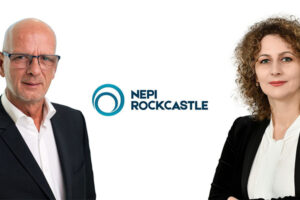The first half of the year was marked by a high level of shopping center completions – about 342,000 sq m entered the Moscow market, exceeding the record set in the first half of 2014 by 41%. According to JLL, the significant increase in retail space has pushed Moscow to first place in terms of supply of shopping centers among European cities, leaving Paris behind. In Q2 2015 the overall volume of quality shopping centers in Moscow exceeded 4.529 million sq m, while this figure in Paris is about 4.497 million sq m. Madrid is in third place, far behind the leaders with only 2.5 million sq m, and the fourth place goes to St. Petersburg, with 2.1 million sq m.
The biggest centers
Among the biggest shopping centers that opened in the first half of this year in Moscow are Columbus (136,000 sq m), Kuntsevo Plaza (66,000 sq m), MARi (70,000 sq m), and Centralny Detsky Magazin on Lubyanka (34,000 sq m).
Despite this, the volume of new completions in the second quarter has shown a negative trend compared to the previous year, only reaching 93,000 sq m, which is 49% less year-on-year. This trend is due to continue through to the end of the year. JLL experts predict that new completions in the second half are to be just one fourth of those in the first half of 2015, with 78,000 sq m coming onto the market. As a result, we expect annual completions in 2015 to be 30 lower than in 2014 and to comprise about 420,000 sq m.
Construction started before the crisis
“Most of the shopping malls on which construction and leasing had started before the crisis opened at the beginning of the year,” explains Tatyana Kluchinskaya, National Director, Head of Retail Department, JLL, Russia & CIS. “At the same time, today we are observing a gradual delivery of new projects and the resumption of development activity. Retail market players are adapting to work under changed conditions. It should be noted that the recent projects have different formats, mostly small ones. It gives the developers certain confidence to complete these objects with tenants in the current environment. In the next three years, we expect the overall volume of new retail space in Moscow to decrease in connection with the suspension of some projects and area reductions among planned shopping centers. A similar situation was observed in 2010-2013, when shopping center completions in Moscow declined several times, but this trend was later reversed.”
In Q2, the shopping center vacancy rate rose from 6.5% to 7.5% in Moscow. Such an increase in vacant space is primarily associated with new deliveries to the market. Tenants’ activity in terms of existing projects was little changed over the quarter. According to JLL analysts, the availability of 47% of shopping centers has remained unchanged, 24% of them have indicated growth, and 29% have even decreased their vacancy rates.
Rotation of tenants
“At the moment, we do see rather active rotation of tenants. Despite the decline in the majority of retailers’ expansions, some retailers are exploring opportunities offered by the current market conditions and opening stores in attractive shopping centers on adjusted terms, closing those in less efficient properties,” Elena Zadorozhnaya, Head of Retail Tenant Representation, JLL, Russia & CIS, comments.
JLL claims that, in Q2, the vacancy rate in successful shopping centers with high traffic and conversion declined by 20 basis points, from 1.5% to 1.3%. “The demand for existing successful shopping centers is stable, allowing them to hold high prices,” Maria Shpakova, Retail Market Analyst, JLL, Russia & CIS, adds. “In our view, the vacancy rate in shopping centers is likely to increase by the end of 2015, but it will not exceed 2%, while the overall shopping center vacancy rate is to rise to 8%.”
Rental rates in shopping centers in Moscow in Q2 were flat. Prime rents are $2,000-3,800/sq m/year (€1,800-3,500/sq m/year), whereas average rents are $400-1,450/sq m/year. Landlords still consider alternative options in commercial terms individually, which in most cases depends on the attractiveness of retailers for their shopping center and his financial performance.






